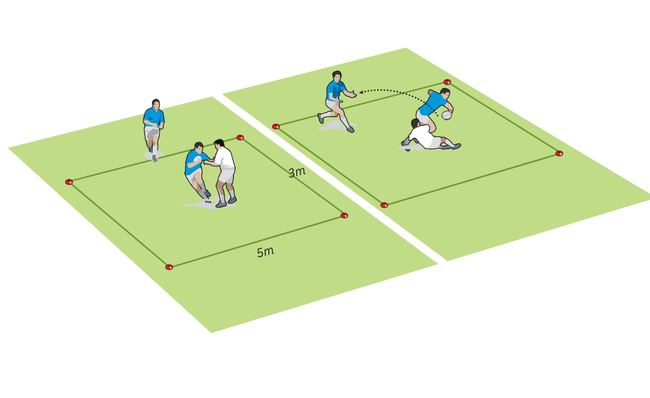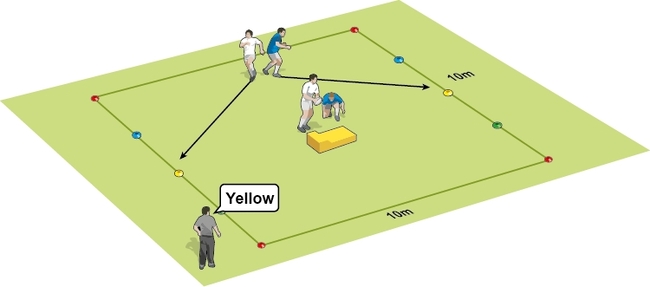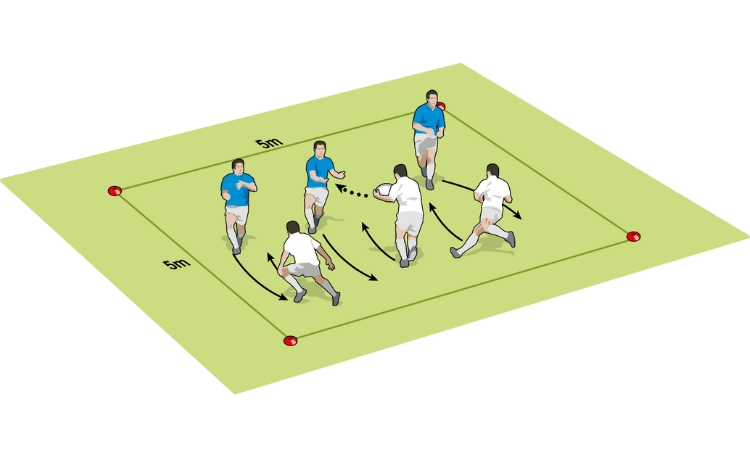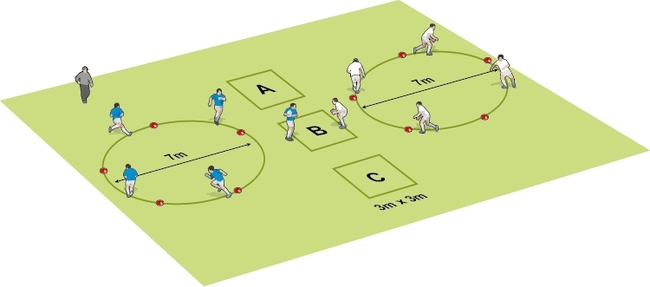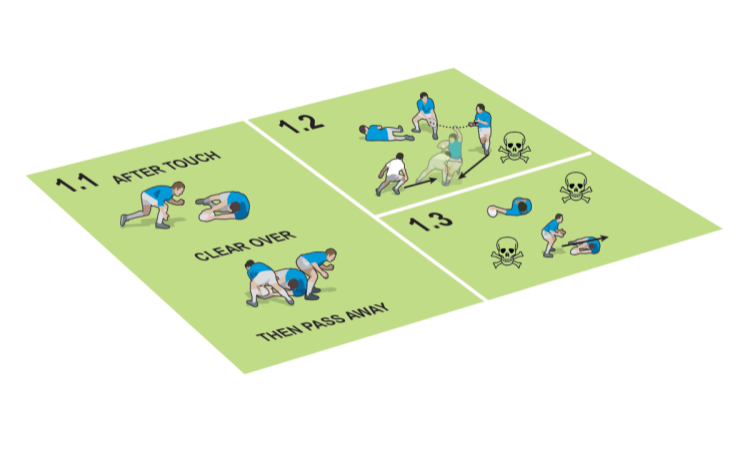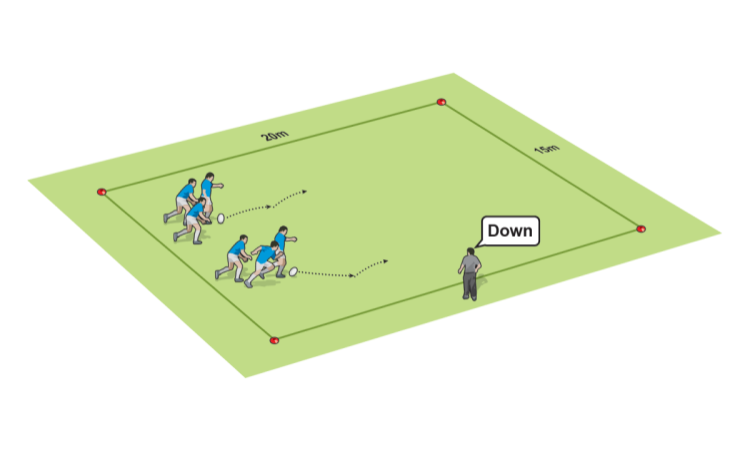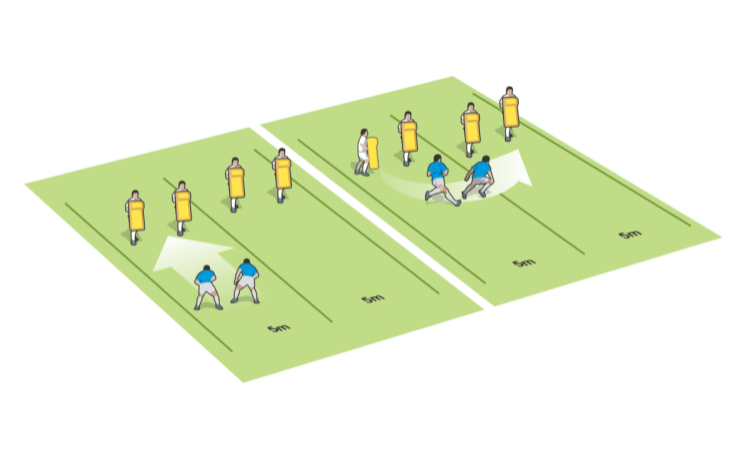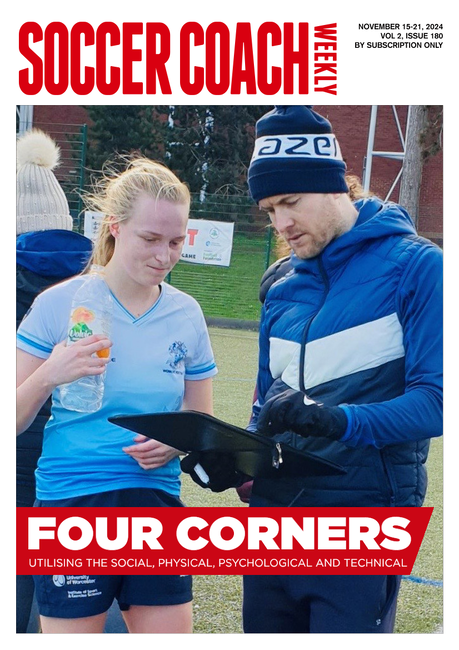Coaching tips for more effective rucking
When a player hits a ruck, they should aim to end up beyond the ball. Even better is for them to be on their feet, moving forward two or three metres beyond the ball. This prevents the danger of too many bodies over the ball. Too often players come to rest on the ruck or just lean over. This just adds to the traffic, legs and feet getting in the way of the scrum half trying to clear the ball.
2. Inside foot
When players arrive they should put their inside foot over the ball. This leads to three great advantages:
- Driving through and out, so clearing players more effectively.
- Stronger body position through the centre of the ruck.
- Less chance of feet hitting the ball.
3. Spine in line
The old rugby coaching adage, but easily forgotten: get the spine in line with the direction of the play to gain maximum power through the contact area. "Bums to posts" (meaning bums in line with the posts) is another phrase to shout at players.
It also makes good sense from the point of view of the referee, who will penalise players who come in from the side.
4. Shoulders, hips and finger tips
Get your players' shoulders and hips lower than the shoulders and hips of the players in front of them. If you can also touch your finger tips on the ground just before the contact, then, as long as the hips are lower than the shoulders, the contact should be enormous.
5. Leave the ball alone
If players look to pick and drive (gather the ball and take it on), or even try to secure the ball by picking it up, then the momentum of the drive is lost and it just causes more traffic. Also picking the ball up can lead to players being off balance and potential knock-ons as well. Help players make decisions on when to pick and drive and the only time to do this – when the ball is clear at the back of the ruck.
This article is taken from the Better Rugby Coaching e-newsletter. Click here to sign up and get free rugby drills and skills twice a week.
Click here for more rugby coaching tips to help decision-making at the ruck.
Newsletter Sign Up
Coaches Testimonials

Gerald Kearney, Downtown Las Vegas Soccer Club

Paul Butler, Florida, USA

Rick Shields, Springboro, USA

Tony Green, Pierrefonds Titans, Quebec, Canada
Subscribe Today
Be a more effective, more successful rugby coach
In a recent survey 89% of subscribers said Rugby Coach Weekly makes them more confident, 91% said Rugby Coach Weekly makes them a more effective coach and 93% said Rugby Coach Weekly makes them more inspired.
Get Weekly Inspiration
All the latest techniques and approaches
Rugby Coach Weekly offers proven and easy to use rugby drills, coaching sessions, practice plans, small-sided games, warm-ups, training tips and advice.
We've been at the cutting edge of rugby coaching since we launched in 2005, creating resources for the grassroots youth coach, following best practice from around the world and insights from the professional game.




